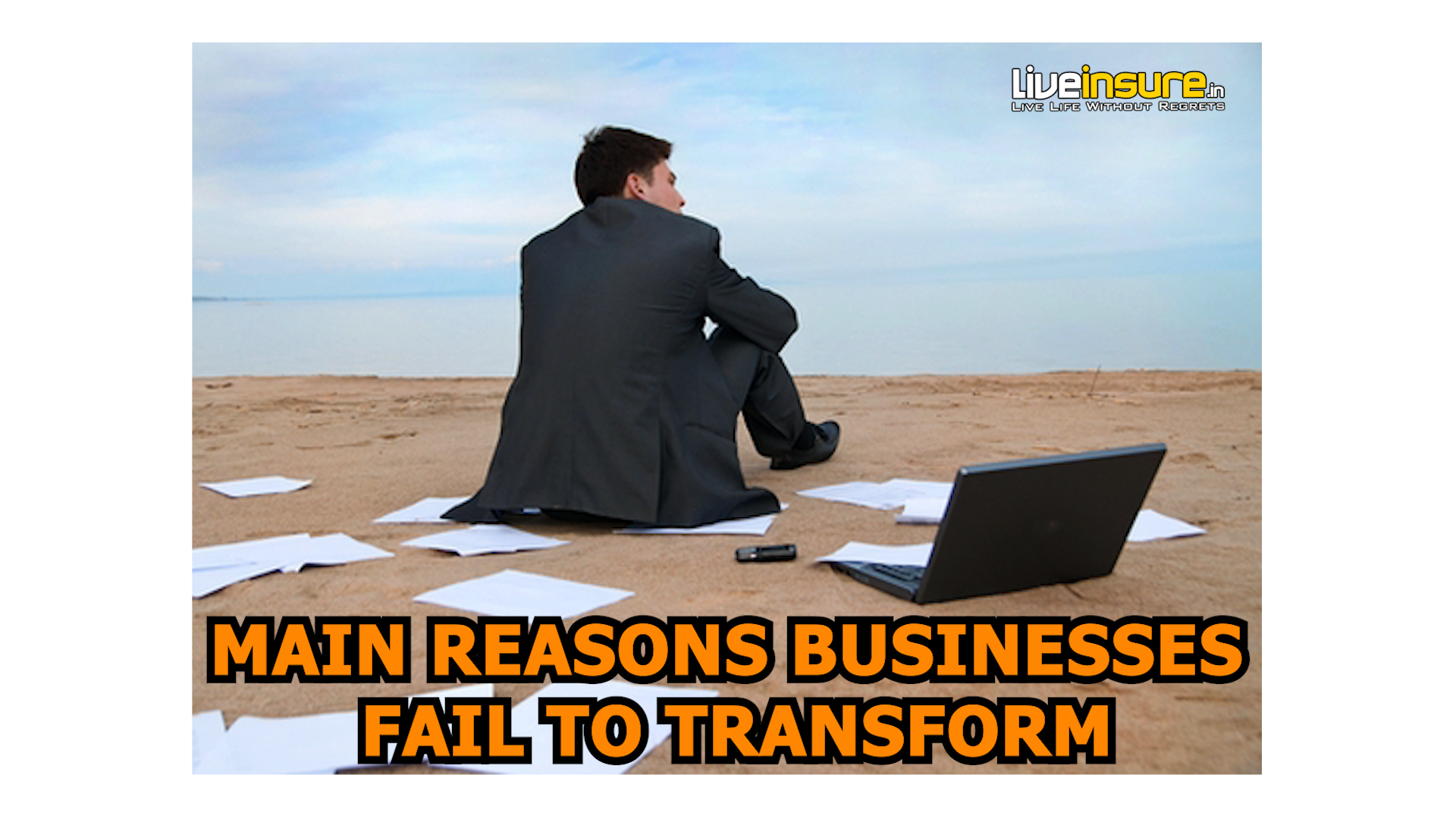My pet peeve is buzzwords. Take “business transformation” or “digital transformation” — genuine business objectives that have lost all technical meaning from their casual overuse.
“Transformation” implies a degree of business complexity in bringing about change. In other words, identifying specific processes that aren’t being used to capacity and applying alternate solutions to optimize technology, improve efficiency, and drive business outcomes. It’s also disheartening that 70% of business transformations fail. Why is that?
Enter yet another B2B buzzword, “change management.” In order to bring about a business transformation, you also need a change management plan— how will you get from point A to B, and how will you get employees to adopt the new systems and processes?
I’ve seen far too many organizations talk about change management plans with little thought to the infrastructure and steps actually needed to deliver a successful outcome. Bringing about complex change in an enterprise or high-growth organization requires a structured process and precision in execution, just like any other strategic initiative.
A change management plan has plenty of considerations, too— the technology, the processes, and most importantly, the people aspect. It’s not surprising many organizations turn to agencies to help guide a business transformation project, the change management plan, and ensure a positive outcome. But even with an agency, your success isn’t guaranteed, and many marketing operations leaders find themselves in a quandary.
So what went wrong?
1. NOT INVESTIGATING THE MARKET
So you’ve always wanted to open a real estate agency, and you finally have the means to do so, but your desire to open the agency blinds you to the fact that the economy is in a down housing market and the area where you want to work in is already saturated with agencies, making it very difficult to break in. This is a mistake that will result in failure from the start. You have to find an opening or unmet need within a market and then fill it rather than try and push your product or service in. It’s a lot easier to satisfy a need rather than create one and convince people that they should spend money on it.
2. LACK OF URGENCY
There are times when clients lack a sense of urgency. They’ll tell me enthusiastically, ‘We’re going to do X, Y or Z in the next quarter.’ But when it comes to it, their actions don’t mirror their enthusiasm. Often this is due to an inability to focus. Let’s face it. We live in a world of busy noise and distraction. There will always be conflicting demands coming at us from every direction. But sometimes, these clients don’t want X, Y or Z enough. It’s almost a case of deliberate self-sabotage.
Clients are full of good intentions at the beginning of their relationship with us. They love the Scaling Up methodology. They tell me they’re going to adopt agile in their business. And then they don’t pick up any momentum.
You have to make success binary. There’s a single mindedness required from the CEO to use a set of metrics and stick to them. Decide on one number, obsess about it daily, whip up the team and constantly drive and iterate. Without this, it’s not going to happen.
The clients that get it see spectacular results. It’s so satisfying to watch. I remember Mudano before Accenture acquired them. They lost and recovered £5 million in revenue in a single quarter. The way they came together and galvanised the team was inspirational. They stopped doing anything that wasn’t going to drive the target, went away and hit it. Fantastic!
3. LACK OF UNITY IN THE EXECUTIVE TEAM
Too often, the team that’s trying to drive the change isn’t broad enough. As CEO, you can try and do it alone. But if your Executive team isn’t lined up behind you, you’ll find it impossible to make any headway. Even one naysayer or backslider is enough to wreck your plans. And beware of fake commitments. We see team members saying they’re going to do something, and then it doesn’t happen. Maybe there’s a lack of ‘disagree but commit’, which leads to fake harmony. As CEO, you must confront this behaviour. It’s toxic.
Clients spring to mind where the CEO is committed with high pace and energy. But this isn’t matched by their team. Frankly, they’re surrounded by slopey shoulders. If this is the case for you, consider bringing in talent from outside. Or even letting some of the Executive Team go.
Changing a business can feel like turning an oil tanker – it’s a big task, and you need the right people around you. We advise a small number of committed individuals who can help you increase the metabolic rate. Then it’s a case of agreeing on a small number of fundamental things you must do, and grinding down on them, day in and day out.
4. YOUR PURPOSE IS TOO WEAK
The Executive Team needs to feel pulled towards something that excites and motivates them. Here, a clearly defined sense of purpose becomes important. It’s like losing weight. If you think, ‘I’m too fat; I need to lose a stone’, your progress may be quick initially. But once you’ve lost five pounds, you start eating yourself back to where you started. It becomes more meaningful if you think, ‘I need to shift the weight so I can play football with my kids.’ You’re being pulled towards something important to you.
Your sense of purpose must be powerful enough to sustain you when life gets hard. Because it will get hard. Change is never easy and requires a deliberate, concerted effort. On a recent trip to the Philippines, I chatted with some people who’d worked with Uber. They told me one of the reasons for their success in South-East Asia was their purpose of ‘changing lives’ and their BHAG (Big Hairy Audacious Goal) of ‘unlocking cities’. In this part of the world, Uber focuses on ride-sharing. You can drive yourself through congested streets, or you can share an Uber. This positively impacts cities, taking millions of cars off the roads and reducing pollution. It’s a powerful message for their staff.
5. NOT HAVING AN EFFECTIVE BUSINESS PLAN
If you don’t have an effective business plan, you can’t properlycommunicate your vision to your team. Tony Robbins advocates not just having a business plan, but having a business map for entrepreneurs to take their small businesses to the next level. Your business map will help you master vital stages of the business cycle, like scaling. Explosive growth can be tempting, but not scaling in a mindful manner is one of the biggest reasons why businesses fail – you have to strike the right balance between growth and infrastructure.
6. NOT PUTTING THE CUSTOMER FIRST
One of the top reasons why businesses fail is that they fall in love with their product instead of their customer. To circumvent business failure, fall in love with your client and figure out every single way you can meet their needs. Anticipate what they want, what they need and, when possible, determine what they might not even know they need yet. Turn your customer into a raving fan – somebody who will tell everybody about your product or service or company. Once you grasp that your customer’s life is your business’ life, you can truly envision how to succeed.
7. NOT HIRING THE RIGHT PEOPLE
Hiring the right people has a massive effect on nearly every area of your business. One of the most obvious examples is sales: If you don’t have enough sales, you can’t pay your team or yourself and you cannot grow. Confident salespeople are a key to increased sales. It’s also astounding how many businesses fail due to inventory mismanagement. Hiring someone who is skilled at inventory management or using a good inventory management software is an easy way to solve this issue.
8. LACK OF FLEXIBILITY
Remember Blockbuster? Radio Shack? Tower Records? These giants of their industries all fell victim to the same reason for business failure: inability to adapt to a changing market. Entrepreneurs who fall in love with a service or product and refuse to change directions when the market demands it are likely to fail. The key to long-term success – in business and in life – is flexibility and a willingness to pivot when necessary.
9. NOT UNDERSTANDING YOUR INDUSTRY
This is one of the driving factors behind why businesses fail to innovate. Certain industries require more innovation, while others may have different product life cycles. Consider the technology industry. The life cycle on an average product is about six months. And in some sectors, like the app business, it’s just one month. People expect continual innovation and improvement, and if you don’t deliver that to them, someone else will. It’s a different world we live in today, where the only constant is change. And if you aren’t staying ahead, you’re falling behind.
10. FEAR OF BUSINESS FAILURE
Business failure is one of the main, if not the biggest, fears of any business owner. If it weren’t for that fear, we wouldn’t even be asking, “Why do businesses fail?” However, as you develop your entrepreneurial and managerial skills, you will find that one of your greatest assets in running a successful business is overcoming your fear of business failure. Without minimizing the validity of your fears, you need to learn to view business failure as a learning opportunity rather than an insurmountable obstacle. Remember, life happens for you, not to you.
HOW APPLE CAME BACK FROM BUSINESS FAILURE

Today, everyone has heard of Apple. It’s one of the most valuable companies of our time, with a market cap of nearly $2 trillion and a stock that is soaring above its competitors. But it wasn’t always that way. Apple is actually the perfect example to look at when considering why businesses fail.
Apple’s founder Steve Jobs was fired from the company in 1985. Before re-hiring Jobs in 1997, the failing business operated at a loss and inched toward bankruptcy. In fact, Michael Dell was advising decision-makers to shut Apple down and give its shareholders their money back. But Apple persisted, and Steve Jobs asked himself one of the most critical questions in his lifetime: “What business are we really in?”
At first, the answer seemed obvious – Apple was in the computer business. But how were they supposed to win back customers when 97% of all computers across the United States were run by Microsoft?
That’s when they realized that no matter how good their product was, Microsoft was embedded and entrenched in the masses. After all, it was one of the main reasons Apple found itself in bankruptcy.
So Jobs asked, “What business do we need to be in?” And Apple decided that it needed to be in the business of connecting people to their passions – to their photographs, their music, to each other. When he did this, he avoided one of the top reasons why businesses fail: lack of flexibility.
Answering this question created one of the most life-altering shifts for Apple. The company transitioned into building basic, cool technology that connects people to what they love. Upon rehiring Jobs, the company arranged a partnership with Microsoft which signaled the company’s turnaround. When Apple launched the iMac just one year later, the firm returned to profitability and made its mark. Before long came the iPod and iTunes, then the iPhone. Their net sales soared. Since that point Apple has never stopped innovating, and their marketing campaigns have propelled the company to an entirely new realm. Had Jobs viewed his firing as the death toll of his career (and company), the firm would have never experienced its revival.
Today, is Apple really in the computer business? Only 10.4% of their business is computers, which means almost 90% is not – the vast majority is made up of iPhone, iPad and Apple Watch sales. Honestly answering the question “Why do businesses fail?” was vital for Apple to change course and become profitable.
If success is about innovation and marketing, then you have to decide who your customer is, what they need, what business you are in and what business you really need to be in. Answering these questions can change your entire business, because the answers will ultimately allow you to change your offer. As we say, change your offer, change your business – and change your business, change your life.




